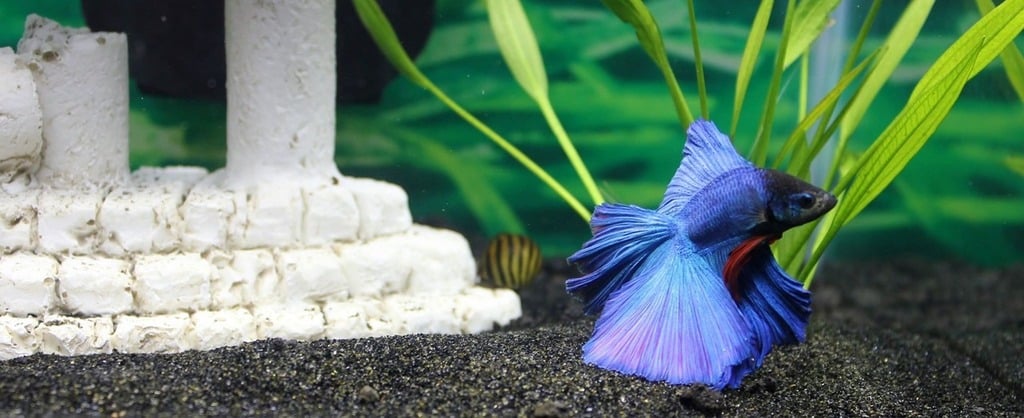Taking care of Betta splenden fish can be a wonderful thing to do, but make sure before jumping into it that you understand step by step how to take care of these little creations. Betta Fish Care Sheet will include everything to ensure that one can provide an outdoorsy appeal to the fish’s surroundings.
Beggars might find difficulty in taking care of these delicate creatures, but worry not, because there is a reason why a lot of people are fond of their colours and personalities. Exercise caution and take care of these lovely pets, but somewhere betas are relatively simple to take care of.
Tank setup, fish diet, aquarium water parameters, and fish sickness treatment are some details that are discussed in this blog. Are you a first-time Betta fish owner looking to set up everything from scratch? Worry no more, as this guide is everything you need to know about these Betta Fish Care Sheets. Now, let’s dive into the details.
Overview of Betta Fish
Characteristics of Betta Fish Care Sheet
Scientific Name: Betta splendens
Lifespan: 3 to 5 years with proper care
Size: Typically around 2.5 to 3 inches long
Temperament: Males tend to exhibit aggressive behaviour.
Betta fish are famous for their vibrant colours and beautiful fins.
Betta fish come from Southeast Asia, specifically rice paddies and shallow ponds. Bettas are labyrinth fish, meaning they can gulp air while at the water’s surface, which enables them to endure areas that have low oxygen.
Different Types Of Betta Fish
Different kinds of betta fish have various colours and types of fins. Some of them are:
Veil Tail: This is the most famous type, which has long fins that resemble a veil, hence the name.
Crown Tail: Befitting its name, it has spiky fins and gives it a crown appearance.
Halfmoon: Easily recognizable due to its big, rounded tail that is in the shape of a halfcircle.
Delta Tail: This is the cousin of the half moon but has a half-triangular shape.
Plakat: These types of bettas are short-finned and usually more energetic.
Setting Up The Tank
For the optimal living conditions for your Betta Fish Care Sheet, you should consider the following:
Minimum Tank Size
5 Gallons: Single betta fish should be kept in no less than 5 gallons. Anything smaller compromises the water quality and limits the living conditions for the fish.
Filtration
Filter: The water has to be filtered. Without a filter, the water will harm the fish. However, it is important to note that bettas prefer gentle filtration, so get a filter that has adjustable flow rates.A water filter provides a healthier environment for your betta by getting rid of the harmful toxins and adding oxygen to the water.’
Temperature
A heater is useful because babies like to be in warm environments, and it is best if the water is kept at 75°F-82°F. Besides, most room temperatures are too low for babies to survive so it is often smart to get a heater in these situations.’
Substrate
Gravel or sand should be placed at the bottom of the tank, ideally between 1 and 2 inches deep.’
Caves, Plants, And Other Decorations
Hideout spaces should be made from plants, caves, and other decorations. Since betta fish are territorial, they appreciate alternative spaces to hide and rest. Instead of using artificial plants, use live ones such as Anubis or java moss because they will help purify the water and provide a good hiding spot.’
Lid cover: It is strongly advised to have a cover for your tank as most bettas tend to go on a jumping spree, and if there is no cover, the fish might jump out of the tank. Do check that there is enough gap to allow the betta to breathe.’
Water Quality: You must ensure that the quality of water is up to par for your baby to be healthy.
PH Level: Water pH needs to be in the range between 6.0 and 8.0, while it is necessary to regularly check the water with test strips to corroborate the pH levels auger well within the recommended range.
Ammonia and Nitrite Levels: These two factors should be taken down to level zero since anything apart from this can be hazardous for your fish. Regular testing of water is a must to keep ammonia and nitrite in check.
Water Changes: Partial water changes of 10-25% once or sometimes twice a month will also help maintain cleanliness. More frequent changes will need to be done in smaller tanks to maintain water quality.
Water Conditioning: When adding water to the tank, it is essential to treat the water with a water conditioner to neutralize chlorine and heavy metals to ensure that bettas survive.
Feeding Your Betta Fish: Remember the restrictions that you have when feeding the betta fish.
Diet: It is recommended that bettas consume only protein, so high-quality betta pellets or flakes are a requirement. Always prefer pellets with fish or shrimp meal as the first ingredient [3].
Frequency: Feed your betta not more than two times a day, always ensuring the amount is suitable for consumption within 2-3 minutes.
The Behavioral and Missing Components of Betta Fishes Society
The personality of a betta always seems like there is no limit to their uniqueness. Males are often kept in solitude because of their aggressive tendencies. Female bettas, however, do well in groups called sororities, given that the tank is of adequate space and has enough hiding spots to prevent stress.
Aggression: As a rule of thumb, men should never be kept together with other men. This is due to the highly possible outcome of fighting, which could be lethal. Should you decide to keep more than one male betta fish, always keep them in separate tanks.
Sororities: Unlike male betta fishes, female bettas can be kept together in groups of 5, but they should not be housed in water of less than 10-15 gallons. It is important to monitor the fish closely and always separate them if fighting starts.
Caution Signs: Caution should always be practiced when keeping a betta, as they show signs of stress and illness easily.
Basic Cleaning and Maintenance
For every aquarium, regular upkeep and maintenance are a must. Here is some cleaning advice:
Tank Cleaning
Use a soft towel to wipe the surfaces of the aquarium as well as its accessories. Do this every month to avoid algae growth. Also, do not use any soap or detergent, as it may endanger your fish.
Filter Maintenance
You physically need to change the filter at regular intervals and wash the part with a sponge. Always rinse the filter in tank water while changing water to protect the good bacteria.
Water Testing
Pets are sensitive to their environment. You need to make sure the water parameters remain stable. Because of this, do test the water once a week, especially after putting in new plants or fish.
Common Health Issues
Since bettas aren’t the healthiest fish, a lot of their health issues stem from improper tank maintenance and water quality. Here are some of the problems and their solutions:
Fin Rot
Bettas’ fins can get frayed if the water quality is not good. To fix their fin rot, first, change the water and put some aquarium salt in it.
Ich (White Spot Disease)
Ich is a type of infection that usually occurs, making white spots infected areas on the betta fish’s body and fins. To cure it, the ideal method is to gradually raise the aquarium’s water temperature while adding aquarium salt. Additionally, treatments for ich can also be found at the local pet shop.
Swim Bladder Disorder
Swim Bladder Disorder: This slows down a fish’s control over its swimming mechanism due to water quality issues or overeating. To aid the fish, it is important to take care of water quality and eating frequency.
Conclusion: Betta Fish Care Sheet
If you take the time to guarantee proper Betta care, the process will surely be fulfilling. As you were instructed in this Betta Fish Care Sheet, you will be able to set up the tank, measure water quality, feed, and maintain the betta.
In doing so, you will have a proper environment, and the betta fish will be happy and healthy. Don’t forget to check frequently and monitor their behaviour. If need be, it’s always a good bet to seek professional help. Embrace the adventure of becoming a betta fish connoisseur!
FAQs: Betta Fish Care Sheet
What Size Tank Do I Need For A Betta Fish Care Sheet?
A minimum of 5 gallons is recommended for a single betta fish to ensure adequate space and water quality.
Do Betta Fish Need a Heater?
Yes, betta fish warm water and thus require a heater to help manage temperatures between 75 and 82 degrees F.
How Often Should I Feed My Betta Fish?
You should give your betta fish food once or twice a day. During each feeding, only provide what the fish is to consume in approximately two minutes.
Can I Keep Multiple Betta Fish Together?
Male bettas cannot be housed together because of their aggressive natures. Female bettas can be placed in groups, but the tank should have ample space and hiding places.
What Should I Do If My Betta Fish Shows Signs Of Illness?
Your betta fish should be monitored for any signs of stress and illness. If you have particular concerns, make sure to locate a fish veterinarian in your area.







